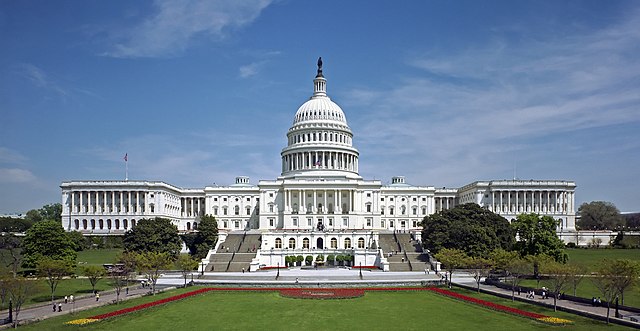The law of the United States comprises many levels of codified and uncodified forms of law, of which the most important is the nation's Constitution, which prescribes the foundation of the federal government of the United States, as well as various civil liberties. The Constitution sets out the boundaries of federal law, which consists of Acts of Congress, treaties ratified by the Senate, regulations promulgated by the executive branch, and case law originating from the federal judiciary. The United States Code is the official compilation and codification of general and permanent federal statutory law.
Constitution of the United States
The United States Congress enacts federal statutes in accordance with the Constitution.
The Supreme Court of the United States is the highest authority in interpreting federal law, including the federal Constitution, federal statutes, and federal regulations.
Law affects every aspect of American life, including parking lots. Note the citations to statutes on the sign.
Federal government of the United States
The federal government of the United States is the national government of the United States, a federal republic located primarily in North America, composed of 50 states, five major self-governing territories, several island possessions, and the federal district and national capital of Washington, D.C., where most of the federal government is based.
The United States Capitol, the seat of government for Congress, the legislative branch of the U.S. government
Joe Biden 46th president
Kamala Harris 49th vice president
The White House includes the office of the U.S. president, known as the Oval Office, and the offices of key presidential advisors and staff.








